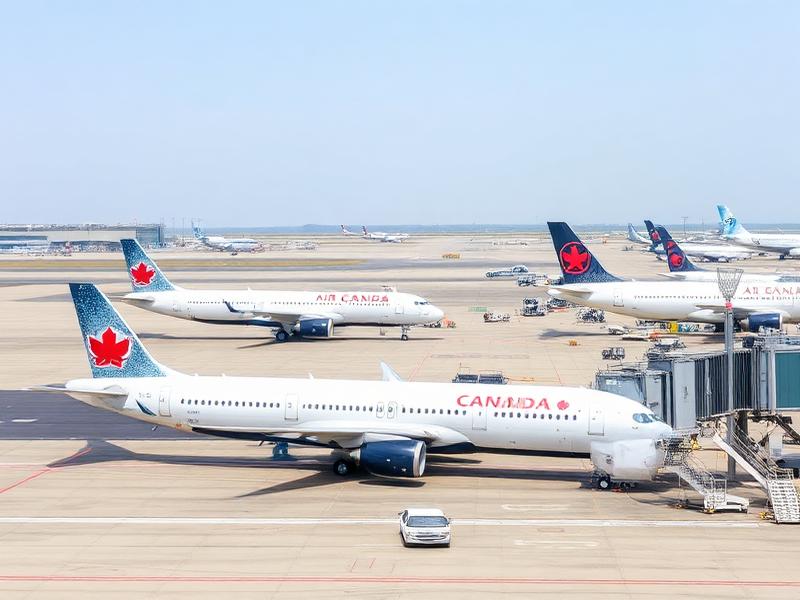Canada's aviation industry has achieved a remarkable milestone, with both Air Canada and WestJet reporting passenger volumes and route capacity that exceed pre-pandemic levels for the first time since March 2020. The comprehensive recovery, announced in simultaneous quarterly reports, demonstrates the resilience of Canadian aviation and signals renewed confidence in domestic and international travel markets.
Record-Breaking Recovery Metrics
Air Canada reported August 2025 passenger volumes of 4.8 million travelers, representing 108% of August 2019 levels and marking the highest monthly passenger count in the airline's 88-year history. WestJet similarly announced record-breaking performance, with domestic passenger volumes reaching 112% of pre-pandemic levels and international routes showing 105% recovery across all destinations.
The recovery encompasses all market segments, including business travel, leisure tourism, and cargo operations. Business travel, which lagged behind leisure recovery throughout 2023 and 2024, has now reached 95% of pre-pandemic levels, with corporate customers resuming regular travel schedules and international business meetings returning to normal frequency.
Route Expansion and Capacity Increases
Both carriers have responded to increased demand by expanding route networks beyond pre-pandemic offerings. Air Canada has introduced 15 new international routes since January 2025, including direct service to emerging destinations in Southeast Asia, Eastern Europe, and additional connections to major European business centers. The airline's fleet utilization has reached 97%, with aircraft spending more time in service than at any point in company history.
WestJet has focused on expanding its domestic network, adding seasonal routes to underserved Canadian destinations and increasing frequency on popular leisure routes. The airline's decision to restore its European network ahead of schedule has proven particularly successful, with transatlantic routes showing strong demand from both Canadian travelers and international visitors exploring Canada.
Employment and Economic Impact
The aviation recovery has created significant employment opportunities, with both airlines now employing more staff than before the pandemic. Air Canada's workforce has grown to 38,000 employees, compared to 36,800 in early 2020, while WestJet has expanded to 14,500 employees from a pre-pandemic base of 14,000. New hiring includes pilots, flight attendants, maintenance technicians, and customer service representatives.
The broader economic impact extends throughout the Canadian economy, with increased tourism spending, airport retail recovery, and revitalization of business travel-dependent sectors. Statistics Canada estimates that aviation sector recovery has contributed $2.3 billion to quarterly GDP growth, supporting recovery in hotels, restaurants, car rental services, and tourism-dependent businesses across the country.
International Market Performance
Canadian airlines' international performance has exceeded recovery expectations, with popular destinations showing particularly strong demand. European routes have recovered to 110% of pre-pandemic levels, driven by pent-up demand for leisure travel and the resumption of business connections with key economic partners. Asian routes, which were among the last to recover due to extended border restrictions, have now reached 98% of 2019 capacity.
Transpacific routes to destinations including Tokyo, Seoul, and Singapore have shown robust recovery, benefiting from increased trade relationships and cultural exchange programs. New partnerships with international carriers have expanded codeshare opportunities, providing Canadian travelers with enhanced connectivity to secondary destinations throughout Asia, Europe, and emerging markets.
Technology and Service Innovations
The recovery period has coincided with significant technological improvements across both carriers. Air Canada's investment in digital check-in systems, mobile boarding passes, and automated baggage handling has reduced processing times while improving passenger satisfaction scores. The airline's new mobile app has achieved a 4.7-star rating with over 2.5 million active users.
WestJet has focused on enhancing its budget-friendly service model while maintaining competitive pricing. New seat configurations, improved in-flight entertainment systems, and partnerships with Canadian content providers have differentiated the airline's offering while supporting domestic creative industries. The carrier's sustainability initiatives, including biofuel programs and carbon offset options, appeal to environmentally conscious travelers.
Challenges and Future Outlook
Despite the positive recovery metrics, both airlines acknowledge ongoing challenges including air traffic control capacity constraints, airport infrastructure limitations, and pilot shortage concerns affecting the global aviation industry. Air Canada and WestJet have responded by increasing investment in pilot training programs and partnerships with Canadian flight training institutions.
Infrastructure improvements at major Canadian airports, including terminal expansions at Toronto Pearson, Vancouver International, and Montreal-Trudeau, will support continued growth. The federal government's commitment to air transportation infrastructure development includes $1.2 billion in airport improvement funding and air traffic modernization initiatives.
Regional and Northern Service Enhancement
Both carriers have committed to improving service to underserved Canadian communities, with particular attention to northern and remote destinations. Air Canada's partnership with regional carriers has expanded service to 15 additional northern communities, while WestJet's acquisition of regional aircraft has enhanced connectivity between smaller cities and major hubs.
The focus on regional connectivity supports the federal government's objectives for national unity and economic development in remote areas. Enhanced air service facilitates business development, tourism growth, and essential services access for communities that rely on aviation for connections to medical facilities, educational institutions, and economic opportunities.
Industry Recognition and Awards
The remarkable recovery has earned international recognition, with both airlines receiving awards for operational excellence and customer service improvements. Air Canada was named "Best North American Airline" by Skytrax for 2025, while WestJet received the "Value Airline of the Year" award from Air Transport World magazine.
Industry analysts credit the recovery to strategic planning during the pandemic downturn, government support programs that maintained industry capacity, and the adaptability of Canadian carriers in responding to changing travel patterns. The successful recovery positions Canadian aviation as a model for international carriers emerging from pandemic-related challenges.
As the aviation sector continues to build on this recovery foundation, both Air Canada and WestJet are positioned for sustained growth, with expansion plans that will further enhance Canada's connectivity to global markets while supporting the domestic economy through increased employment and tourism revenue. The complete recovery to pre-pandemic levels marks not just a return to normalcy, but the beginning of a new era of growth and innovation in Canadian aviation.
